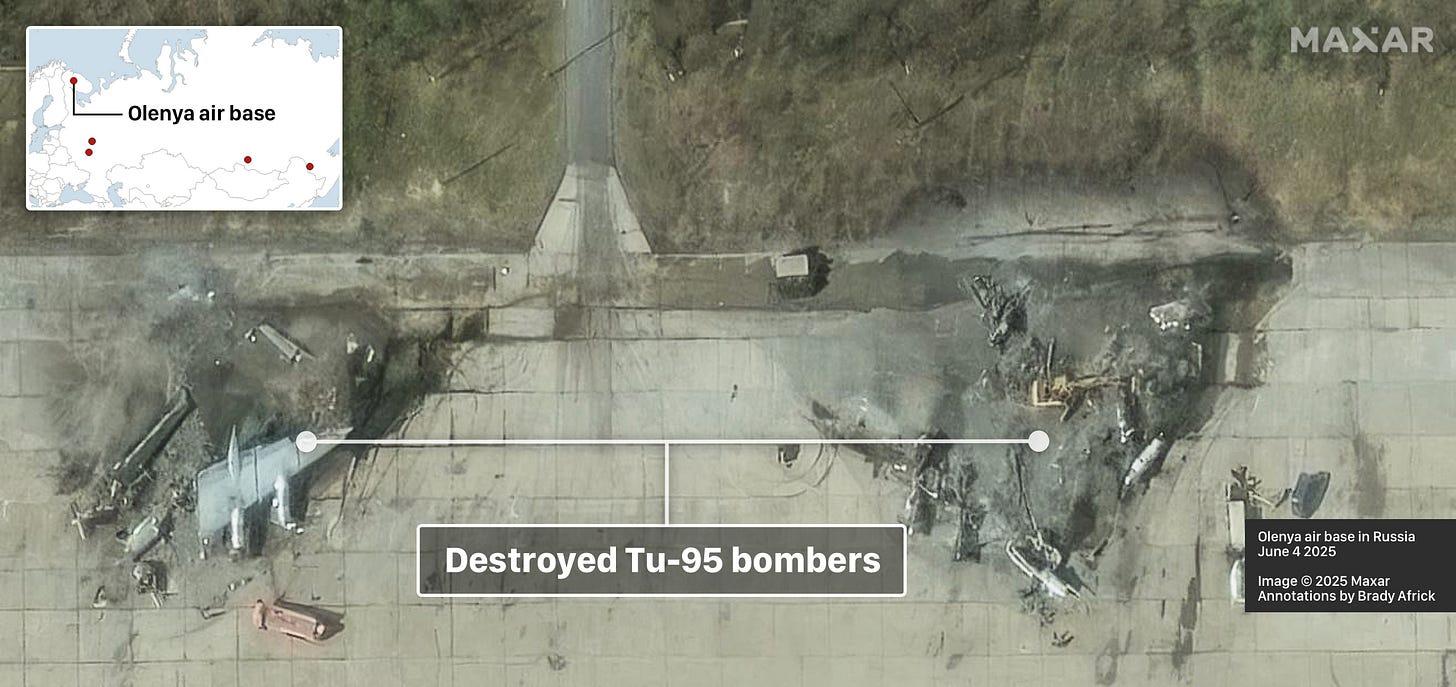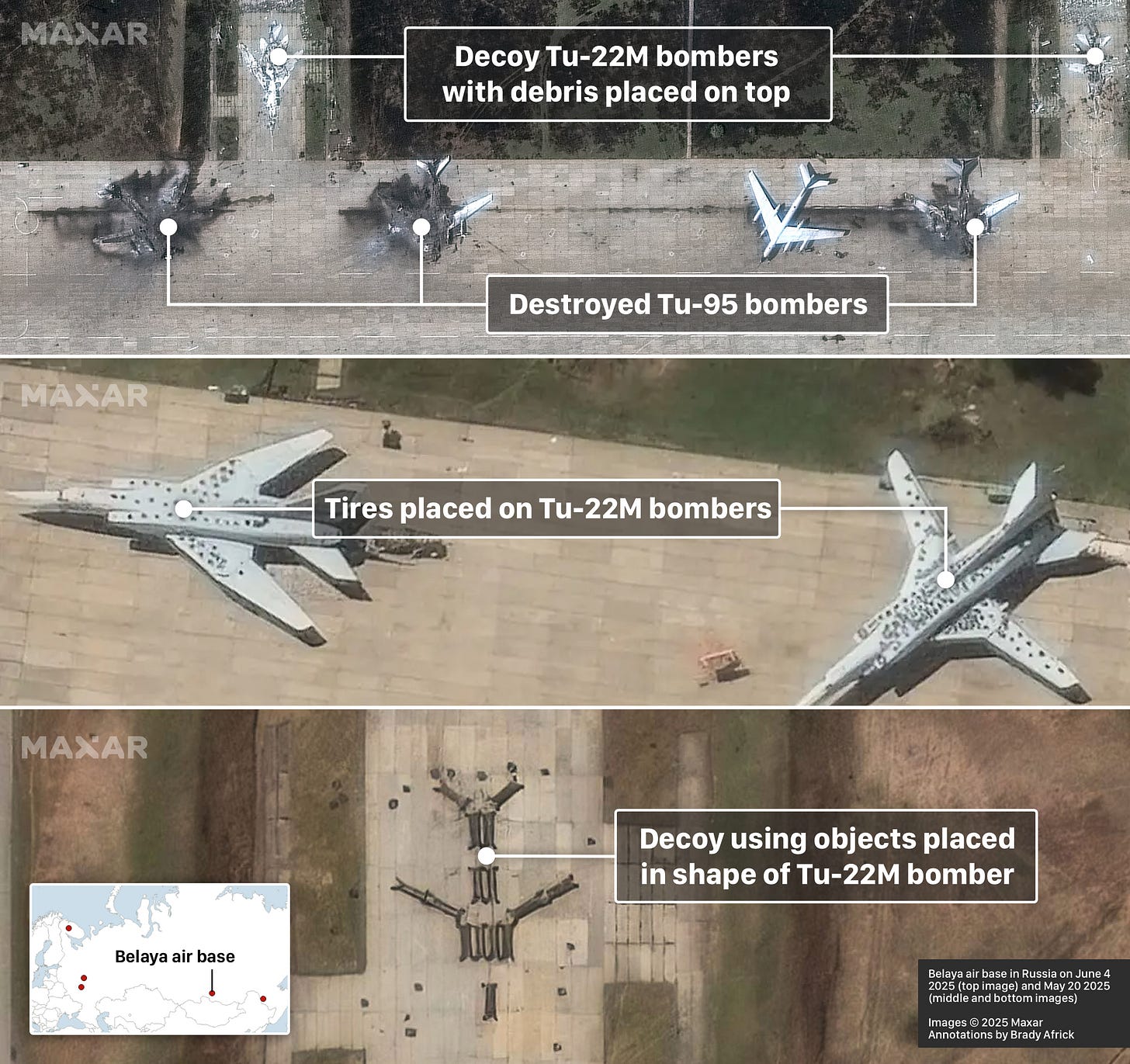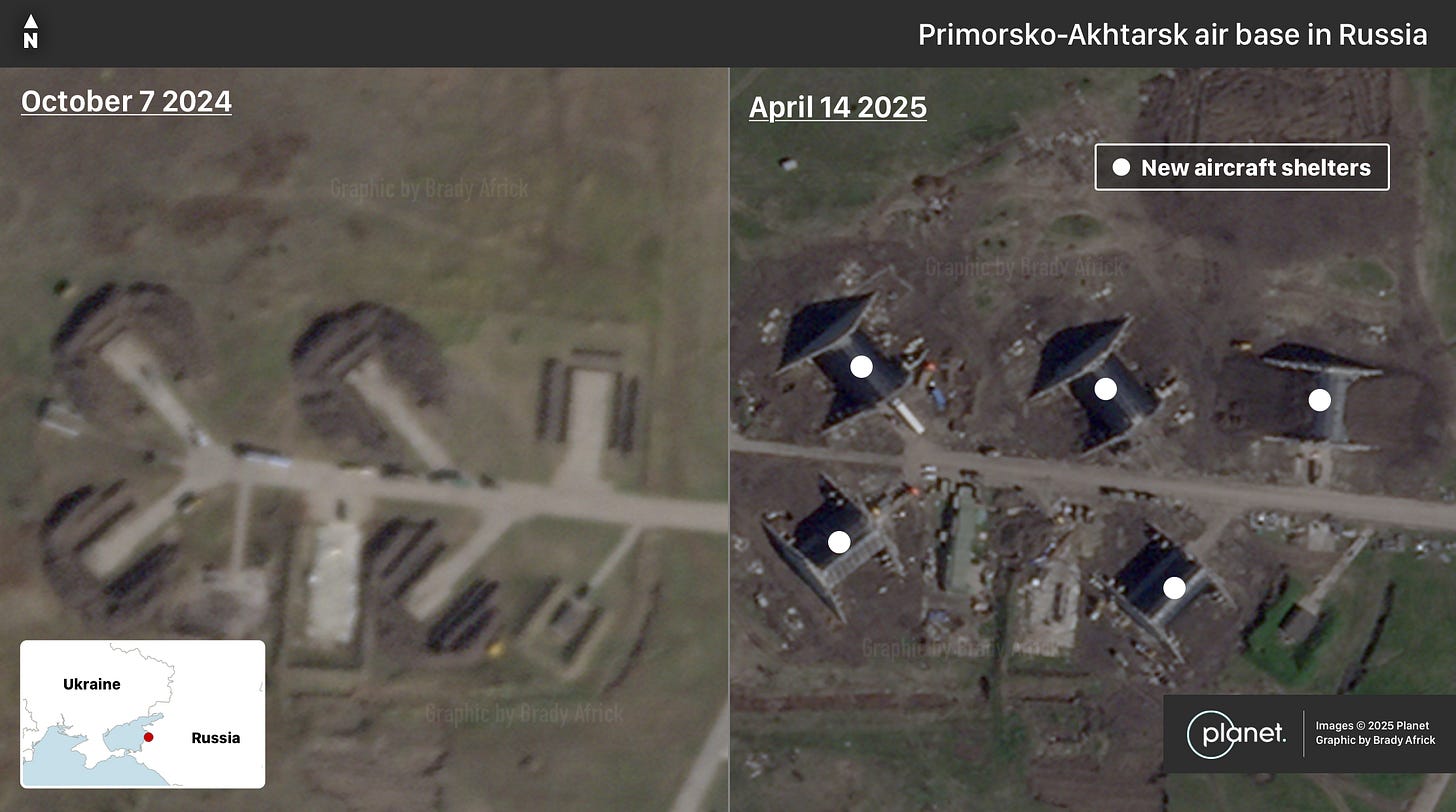Ukraine's strike on Russian bombers avoided decoy aircraft
Kyiv's 'Operation Spiderweb' destroyed Russian planes at several air bases despite Moscow's deception efforts
Welcome to Views From Above, a newsletter bringing you satellite imagery snapshots of major world events. Today, we are taking a look at Ukraine’s successful drone attack on Russian bombers and Moscow’s failed deception efforts at those air bases.
Last week, Ukraine pulled off a daring attack on Russian air bases when drones rose from trucks to strike long-range bombers far from the front line. Several of these bases contained simple decoy aircraft, and planes covered in tires, which failed to mislead Kyiv’s drones.
The aircraft targeted by Ukraine were not only Russia’s bombers but also airborne early warning aircraft and a cargo plane. Some of the bombers were loaded with missiles at the time of the attack.
Ukraine’s operation targeted five air bases, and drones successfully made it to four of them.
At Russia’s Belaya and Olenya air bases, the burnt husks of Russian Tu-95 bombers are visible in the satellite imagery above, released by commercial imagery provider Maxar. Also destroyed were several Tu-22M bombers, another aircraft Russia uses to strike Ukraine. Damage to aircraft at a third base, named Dyagilevo, can be seen in footage from the drones’ onboard cameras released by the SBU, a Ukrainian intelligence agency. Published footage also shows Ukraine’s drones targeting a pair of Russian A-50 airborne early warning aircraft at a fourth base, which were missing parts and non-operational.
Drones en route to attack a fifth Russian air base never made it there. Videos from the ground showed a truck reportedly carrying them exploding on the side of the road. In total, analysts from the open-source intelligence company Janes identified 22 Russian aircraft damaged or destroyed across the air bases targeted by Ukraine.
Alongside destroyed planes, Russia’s deception efforts are visible in satellite imagery of these sites. I spoke with Business Insider about the simple decoy aircraft Russia has created at many of their bases in an effort to confuse Ukrainian weapons. They also placed debris on top of some of these flat decoys, or positioned other objects in the rough shape of an aircraft, to increase their visibility to Ukraine’s weapons or the radar-based satellite imagery used by the Ukrainian military.
Another deception tactic Russia employs is adorning its aircraft with tires, which can alter the plane’s apparent shape and profile when viewed from above. As Ukraine’s destruction of several Russian aircraft shows, these efforts were ineffective in luring Ukraine’s drones away from their targets.
Notably, the aircraft targeted by Ukraine were sitting out in the open, not tucked away in hangars or shelters. Russia’s limited number of shelters for its aircraft was a vulnerability only addressed in recent years. However, their efforts in building them have largely focused on sites closer to the front line in Ukraine than those hit by Kyiv’s operation last week.
Ukraine continues to strike Russian air bases and their support facilities, like the fuel depot Kyiv hit Friday that supplies a nearby Russian air base. Moscow responded to Ukraine’s operation from last week with a barrage of drone and missile strikes on cities across the country, which left several dead and dozens injured.
Thanks for reading Views From Above. Subscribe for free to get satellite imagery and news delivered to your inbox. Already subscribed? Share this newsletter with a friend.






